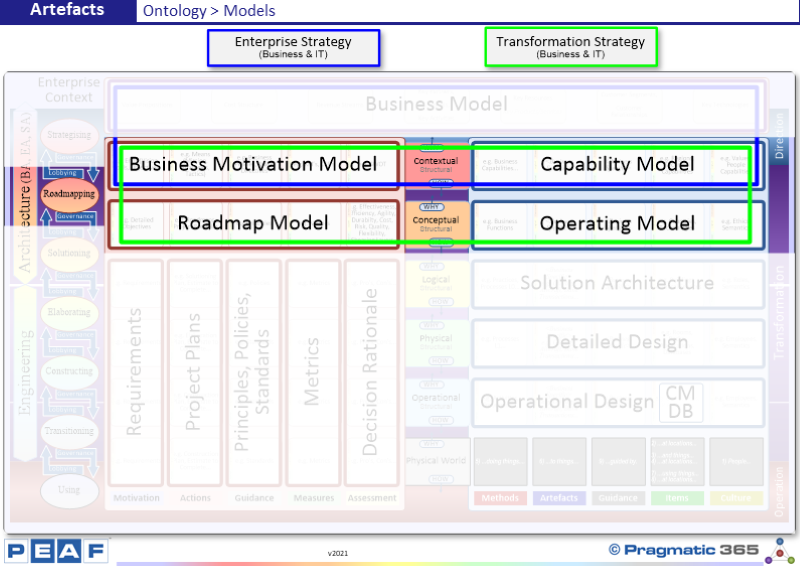
Here we show the common names for the various domains in the
EA Ontology.
Many people use these terms (and others) but what they are
exactly, and more importantly how they relate to each other, tends not to be
clear. This is very worrying since they are all interrelated and depend on each
other in complex ways. Not knowing or realising these relationships exist,
causes Enterprises to try to create one or more of them without the required
input information to do so. Or, if that information exists, to not relate one
to the other and hence mistakes of monumental importance can remain hidden
until much later when their impact is great, which tends to drive people to
minimise or ignore them until something catastrophic happens. Not a good way to
manage anything.
...to read more, please Login or Register